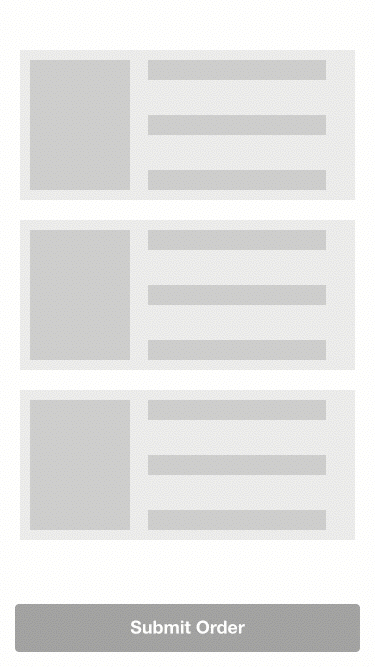Many of our digital products these days are becoming more complex and multi-faceted. As our products continue to grow, it causes a multitude of problems. One, the increased complexity and depth can quickly erode all the ease of use efforts you've performed since your MVP. Two, a problem arises where only a small fraction of your users are getting all the possible value out of your product.
- Does your product have disparate features where the users of the features don't overlap?
- Do your disparate features live on their own but are logical steps in the overall service journey? Ex. Submit an order Vs. View Order Status
- Do you have a deep product and many users are only using the surface-level functions?
If you answered yes to any of the questions above, then your experience is prime for postboarding.
First, what's wrong with onboarding?
- Often gets in the way from the primary task that drove you to the app, which could lead to dropout.
- Many tell you so much that you couldn't possibly remember and then there's no way to go back to attempt to learn again (if your users are even that motivated).
- Can feel business serving (marketing), even if it is actually helpful but appears too much like a hard sell. This could lead to a loss of trust.
- Redundant with app store details and feels like a waste of time.
Enter Postboarding
While not a novel idea (or name?), we can all agree that communicating with our users doesn't end with onboarding. Postboarding is just another tool in the toolkit. I define postboarding as a set of patterns similar to onboarding that are used for your product to communicate with your users after they've successfully completed a task/goal/milestone or whatever is pertinent to your product's experience. The important aspect of this is after the triggering event rather than before, as with onboarding.
Benefits
- Convert novice users to experts, which leads to increased user retention.
- Helps users get more value from your product, which leads to increased user retention.
- Fewer obstacles to complete the desired task by moving onboarding message to later or by using it to abbreviate flows (more about that later), which could lead to increased conversion.
Cautions
No pattern or best practice is appropriate for every context and postboarding is no different. To be clear, this is not a marketing solution - postboarding is user-serving and function focused. Lastly and most importantly, I haven't yet been able to thoroughly test different postboarding patterns.
Recommendations
- Must relate and add value to the current feature that they are currently engaged with.
- Focus only on one thing.
- Allow the user to exit postboarding without consequence.
- Move optional functions outside of the task flow and consider moving options to postboarding.
- Decrease length of onboarding and consider moving content to postboarding.
- Space out your postboarding (Don't show postboarding every time after the user completes something).
- Maintain freshness (Don't show the same postboarding messages multiple times).
- Personalize your messages and content.
Questions to ask to confirm if postboarding is right for your context:
- Is the discussed feature the next logical step of the customer's journey?
- Does the discussed function enhance the current feature by reducing customer's future effort?
- Is the discussed function user-serving and not serving the business?
Potential Patterns
Screen/Modal
Directly after the user completes their task and receives feedback, show a full-screen takeover that either directs the user to appropriate next step in their journey or provides them with an easy opt-in action to enable additional abilities.
Notification
When an experience has no conclusive end, send a notification shortly after the session has ended to provide a quick action or an informational tip. If your users are comfortable with actionable notifications, support the action that way.
Passive In-App Message
When the message or action you'd like to present the users is more supplemental, display an in-app message on the home screen.
Conclusion
While my title suggests postboarding as an alternative to onboarding, I believe they can and should work together. The more important takeaway is to always question what you're trying to accomplish with your onboarding and postboarding. Make sure it's truly valuable for the user to get the most out of your product. Try your best to stay out of the user's way but when necessary give them a helping hand, that's the main purpose of onboarding and postboarding.


